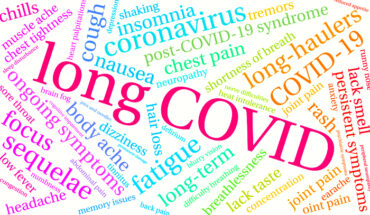In tribal societies, obesity is often seen as a sign of health and beauty. However, in the developed world it is regarded as a disease that mainly affects the poor. It wasn’t always like this: Our ancestors were hunter gatherers and didn’t always have energy ready. During the harsh Neolithic winters food was scarce and they needed precious fat reserves in order to survive. Skinny people often starved, or died from illness.
During the harsh Neolithic winters food was scarce and they needed precious fat reserves in order to survive. Skinny people often starved, or died from illness.
They worshipped plump, fertile women and you can see this in their carved animal bones and rock art. Today’s skinny supermodels wouldn’t have done much for Neolithic man.
Neolithic people regarded plumpness as wealth. However today it is associated with lower socio-economic groups. Obesity is defined as excess fat accumulation that is detrimental to health. Being overweight can contribute to diabetes which can lead to serious complications including cardiovascular disease, strokes, kidney disease and blindness. In 2015 there were 627,000 deaths attributed to diabetes in Europe.
Obesity is one of the few diseases that could be considered as growing around the world. Almost 30% of the world’s population is overweight, or obese. In Europe, it is now estimated that approximately 20 percent of the adult population is obese and this has significant economic implications too, with more than 33 billion Euros annual health care costs being attributed to obesity.
Younger and younger people are becoming obese. In our post-industrial western world, high calorie convenience foods are one factor that can influence obesity, but there are others. Compounds found in plastic, pesticides and stress levels can also influence metabolism. Even intra-uterine babies are being exposed to chemicals ingested by their mothers. It isn’t just people who are putting on weight, but also cats. Food production has changed for cats as well as humans.
The body has systems to control vital functions such as breathing, heart-beat and fat storage for us. We need around 1,300 calories a day just to fuel our regular functions, but we eat on average 2,000 – 2,500 calories a day.
We need around 1,300 calories a day just to fuel our regular functions, but we eat on average 2,000 – 2,500 calories a day.
The body naturally burns 40-50% of our naturally ingested calories every day. Energy balance must be tightly regulated to stop you gaining weight. We have hormones in our body that regulate how hungry and how full we are. The body has a type of set fat thermostat. It is our genes interacting with the environment that is pushing the fat epidemic. Some lucky people metabolise food quicker than others.
In weight loss contests nearly all the contestants re-gain much of the weight they lose, within a year or two. Only 20% of obese patients on dietary treatment maintain a significant weight loss after three years.
For some patients with obesity, bariatric surgery offers a chance to break free of this life-threatening condition and its associated diseases such as Type 2 Diabetes. Bariatric surgery has been shown to have a substantial and sustained effect on weight and significantly improved co-morbidities in the majority of patients, resulting in a reduction in medication needs and an improvement in both long-term health and quality of life. Metabolic surgery is associated with higher diabetes remission rates, lowered mortality risk, fewer complications, higher weight loss and improved quality of life. Yet less than 2% of eligible patients are treated in countries with the highest metabolic surgery uptake per year.
Although the US has experienced a growth of obesity medicine it still takes around eight years until a patient gets effective treatment. The number of bariatric procedures has remained flat in recent years. 0.3 to 1% of suitable candidates have access to surgical treatments for obesity and diabetes. We operate on patients who have cardiac disease and diabetes – risk factors for surgical morbidity.
As with all types of surgery, patients can have serious complications from bariatric surgery. Mortality rates are about 0.3%. It is however considered to be safer than gallbladder, adrenal and hernia surgery.
Patients who have had bariatric surgery gain just around 20% of their weight lost after five years, but their diabetes and cardiovascular problems are improved. These people don’t feel hungry for a period of time.
Weight is our society’s last acceptable form of discrimination. Most individuals have dealt with weight issues and feel the modalities that worked for them should work for everyone. Weight bias pervades all sectors of society. We have a limited understanding of the condition of obesity, despite it affecting a third of the world’s population.
Professor Rubino is internationally recognised as one of the world’s leaders in the research, teaching and practice of metabolic and weight-loss surgery. His research provides a scientific rationale for surgical treatment of obesity and associated type 2 diabetes. His clinical expertise includes laparoscopic, bariatric, metabolic and upper digestive surgery, including gastric bypass, sleeve gastrectomy, gastric banding and novel procedures.
Professor Rubino received his MD and completed his residency in general surgery at the Catholic University, in Rome, Italy. He completed fellowships in laparoscopic surgery at the European Institute of Telesurgery in Strasbourg, France; Mount Sinai Medical Centre, New York; and the Cleveland Clinic.
- An insight into obesity - 6th September 2017






